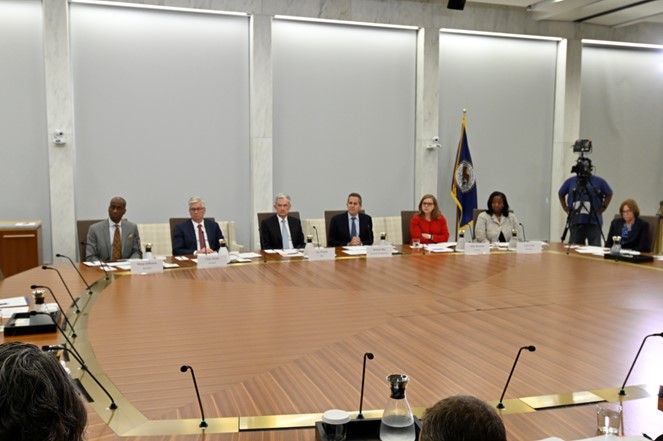
The Majority of Fed Policymakers are Still Concerned About Inflation
The minutes of the July 25-26 FOMC meeting were released and showed ongoing concerns about U.S. inflation are still front and center on the minds of most policymakers. During the July meeting, Federal Reserve officials were still focused on rising prices expressing that more rate hikes could be necessary unless conditions change. The July meeting had resulted in a quarter percentage point rate hike; the minutes are being looked at by market participants to get a sense of the Fed’s next steps.
While the Fed says it is data dependent, so a surprisingly weak economic report or lower-than-expected inflation statistics could change the Fed’s hawkish stance at the next meeting, if economic conditions remain unchanged or get stronger, the Fed is likely to keep applying the economic brakes by raising rates.
“With inflation still well above the Committee’s longer-run goal and the labor market remaining tight, most participants continued to see significant upside risks to inflation, which could require further tightening of monetary policy,” the meeting summary stated.
The increase in the Fed Funds rate after the last meeting brought the key interest rate to its highest level in 22 years, 5.25%-5%.
The Fed has held for more than 18 months that they are targeting a 2% inflation rate. During that time, key inflation indicators have been as high as 9%. Depending on the measure used, inflation at the last read was between 3% and 4%.
“In discussing the policy outlook, participants continued to judge that it was critical that the stance of monetary policy be sufficiently restrictive to return inflation to the Committee’s 2% objective over time,” according to the Fed’s recent release.
The Fed always risks overdoing it during a tightening policy period. So, while members agreed inflation is “unacceptably high,” there were indications “that a number of tentative signs that inflation pressures could be abating.”
As written in the release, “Almost all” the meeting participants, which includes nonvoting members, were in favor of the July rate increase. However, a couple of members opposed and suggested the Committee could skip a hike to monitor how previous hikes play out in inflation indicators. Navigating economic activity and price levels is not a precise science, and there is a lag between actions and impact.
“Participants generally noted a high degree of uncertainty regarding the cumulative effects on the economy of past monetary policy tightening,” the minutes said.
The minutes did indicate that the economy was expected to slow and unemployment likely will rise somewhat. Of note is a retraction in an earlier forecast that troubles in the banking industry could lead to a mild recession this year. A number of smaller banks found themselves challenged and even requiring government assistance in March.
The minutes indicated that the policymakers are also watching the health of the commercial real estate (CRE) market as they raise rates. Specifically cited were “risks associated with a potential sharp decline in CRE valuations that could adversely affect some banks and other financial institutions, such as insurance companies, that are heavily exposed to CRE. Several participants noted the susceptibility of some nonbank financial institutions” such as money market funds and the like.
Looking Forward
Federal Open Market Committee members emphasized the two-sided risks of easing too quickly and risking higher inflation against tightening too much and sending the economy into contraction. The most current data shows that while inflation is still 50% or more from the central bank’s 2% target, it has made marked progress since peaking above 9% in June 2022. Examples are the Consumer Price Index (CPI), ran at a 3.2% annual rate through July. The Personal Consumption Expenditures (PCE) price index core was at 4.6%.
In their consideration of appropriate monetary policy actions at this meeting, participants concurred that economic activity had been expanding at a moderate pace. The labor market remained very tight, with robust job gains in recent months and the unemployment rate still low, but there were continuing signs that supply and demand in the labor market were coming into better balance. Participants also noted that tighter credit conditions facing households and businesses were a source of headwinds for the economy and would likely weigh on economic activity, hiring, and inflation. However, the extent of these effects remained uncertain. Although inflation had moderated since the middle of last year, it remained well above the Committee’s longer-run goal of 2%, and participants remained resolute in their commitment to bring inflation down to the Committee’s 2% objective.
Take Away
While the Fed will react to incoming data when they decide at the September 19-20 FOMC meeting, the minutes from the July meeting suggest that if there is little change in economic activity, the majority of members are apt to vote to hike rates once more.
Managing Editor, Channelchek
Source
https://www.federalreserve.gov/monetarypolicy/fomcminutes20230726.htm